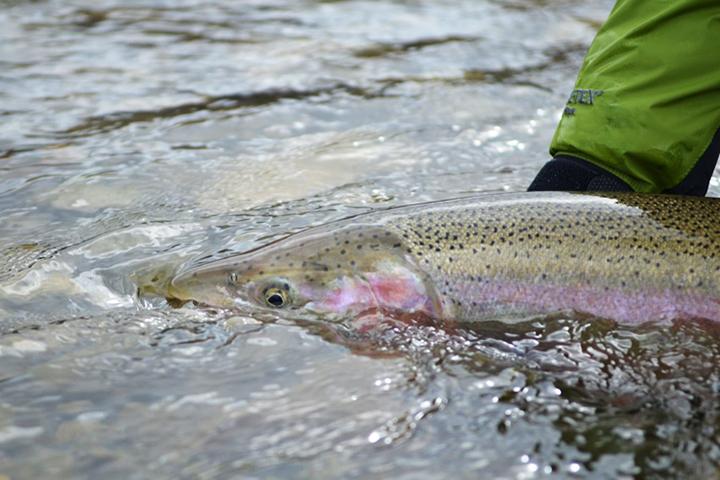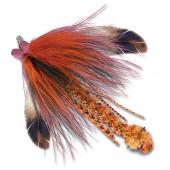Handle with Care
Practicing Proper Catch & Release.
Trout are surprisingly sensitive fish. Oftentimes, trout are released by anglers who believe the fish is fine—when in fact it will die within a day or two due to the stress and exhaustion of the catch.
To help ensure your fish makes a full recovery, play it quickly. Keep the fight as short as possible to avoid lactic acid buildup in the fish. Use a net to land it, preferably a rubber- or nylon-coated mesh that will not damage the fish’s protective slime. Once the fish is in the net, the first priority is to remove the hooks. This is best accomplished with a pair of needle nose pliers or hemostats. Be sure to wet your hand before handling the fish. Gently remove the hooks, doing as little damage as possible while always keeping the fish in the water.
Once the hooks are removed from the fish, let it rest in the water while you and your buddy get ready to take a photograph. Hold the fish firmly around the base of its tail and support its weight with your other hand, making sure to not put your fingers in the fish’s gills. Do not hold the trout like a bass by its jaw—trout have completely different jaw structures, and you will break the trout’s jaw or neck.
When releasing your fish, make sure the trout is fully revived before you let it go. If you are fishing in moving water, hold the fish facing upstream so that the water works its way through the gills. If you are on a pond or lake, hold the fish by the tail and work it back and forth until it has enough energy to swim off on its own.
By using these techniques, you ensure the health of the fish and future opportunities for great fishing. If you have any other questions about proper catch-and-release techniques, feel free to stop by your local fly shop.
Jake Adelman is a guide at Montana Troutfitters in Bozeman.













